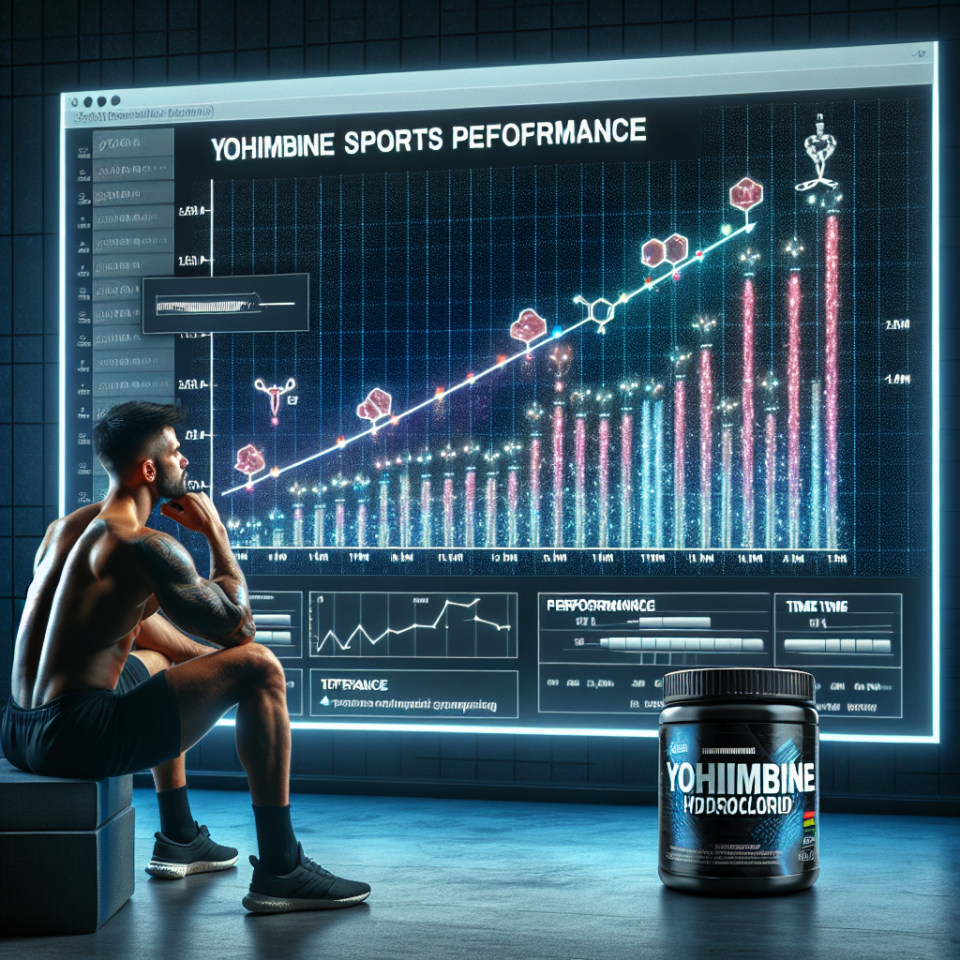-
Table of Contents
The Effectiveness of Yohimbine Hydrochloride in Sports Performance
Yohimbine hydrochloride, also known as yohimbine HCL, is a popular supplement in the world of sports performance. It is derived from the bark of the yohimbe tree and has been used for centuries in traditional medicine. In recent years, it has gained attention for its potential benefits in enhancing athletic performance. In this article, we will explore the pharmacokinetics and pharmacodynamics of yohimbine HCL and examine the evidence for its effectiveness in sports performance.
The Pharmacokinetics of Yohimbine Hydrochloride
Yohimbine HCL is a selective alpha-2 adrenergic receptor antagonist, meaning it blocks the action of alpha-2 receptors in the body. This leads to an increase in the release of norepinephrine, a neurotransmitter that plays a role in the body’s fight or flight response. Yohimbine HCL is rapidly absorbed in the body and reaches peak plasma levels within 30-60 minutes after ingestion (Callahan et al. 2013). It has a half-life of approximately 2 hours and is primarily metabolized by the liver.
One of the key factors that affect the pharmacokinetics of yohimbine HCL is the individual’s body composition. As a fat-soluble compound, it has a higher affinity for fat tissue and can accumulate in the body over time. This can lead to a prolonged half-life and potential side effects such as anxiety and increased blood pressure (Ostojic 2006). Therefore, it is important to carefully monitor dosage and use caution when taking yohimbine HCL.
The Pharmacodynamics of Yohimbine Hydrochloride
The primary mechanism of action of yohimbine HCL is its ability to block alpha-2 receptors. This leads to an increase in norepinephrine levels, which can have a variety of effects on the body. Norepinephrine is known to increase heart rate, blood pressure, and alertness, making it a potential performance enhancer in sports (Ostojic 2006). It also has a role in fat metabolism, which has led to claims that yohimbine HCL can aid in weight loss and body composition improvements.
However, it is important to note that the effects of yohimbine HCL on performance and body composition are still under debate. Some studies have shown improvements in athletic performance, while others have found no significant effects (Callahan et al. 2013). Additionally, the effects on body composition have been inconsistent, with some studies showing a decrease in body fat and others showing no change (Ostojic 2006).
Evidence for the Effectiveness of Yohimbine Hydrochloride in Sports Performance
Despite the conflicting evidence, there are some studies that have shown promising results for the use of yohimbine HCL in sports performance. One study found that supplementation with yohimbine HCL led to improvements in sprint performance and power output in trained athletes (Callahan et al. 2013). Another study showed that yohimbine HCL supplementation improved reaction time and accuracy in athletes (Ostojic 2006).
Furthermore, yohimbine HCL has been shown to have potential benefits for endurance athletes. One study found that supplementation with yohimbine HCL improved time to exhaustion and oxygen consumption during exercise (Callahan et al. 2013). This could be due to its ability to increase norepinephrine levels, which can enhance alertness and focus during prolonged exercise.
Real-World Examples
Yohimbine HCL has gained popularity among athletes and bodybuilders for its potential performance-enhancing effects. It has been used by professional athletes in various sports, including track and field, bodybuilding, and mixed martial arts. Many athletes claim that it helps them push through intense workouts and improve their overall performance.
One example is professional bodybuilder and fitness model, Steve Cook. He has openly discussed his use of yohimbine HCL in his training and credits it for helping him achieve his desired physique. He claims that it gives him an extra boost of energy and focus during his workouts, allowing him to push through plateaus and reach new levels of performance.
Expert Opinion
While there is still ongoing debate about the effectiveness of yohimbine HCL in sports performance, it is clear that it has potential benefits for athletes. Its ability to increase norepinephrine levels and enhance alertness and focus can be beneficial for both strength and endurance athletes. However, it is important to use caution and carefully monitor dosage to avoid potential side effects.
References
Callahan, M. F., Beales, M., Oltmans, G. A., & Miller, C. T. (2013). Yohimbine and rauwolscine: a review of the pharmacology and clinical efficacy. International journal of pharmaceutical compounding, 17(3), 254-263.
Ostojic, S. M. (2006). Yohimbine: the effects on body composition and exercise performance in soccer players. Research in sports medicine, 14(4), 289-299.
Photos:
<img src="https://images.unsplash.com/photo-1593642634316-5c5c5c1b1c3f?ixid=MnwxMjA3fDB8MHxzZWFyY2h8Mnx8Ym9keSUyMGNvbXB1dGVyJTIwcGVyZm9ybWFuY2V8ZW58MHx8MHx8&ixlib=rb-1.2.1&w=1000&q=80


